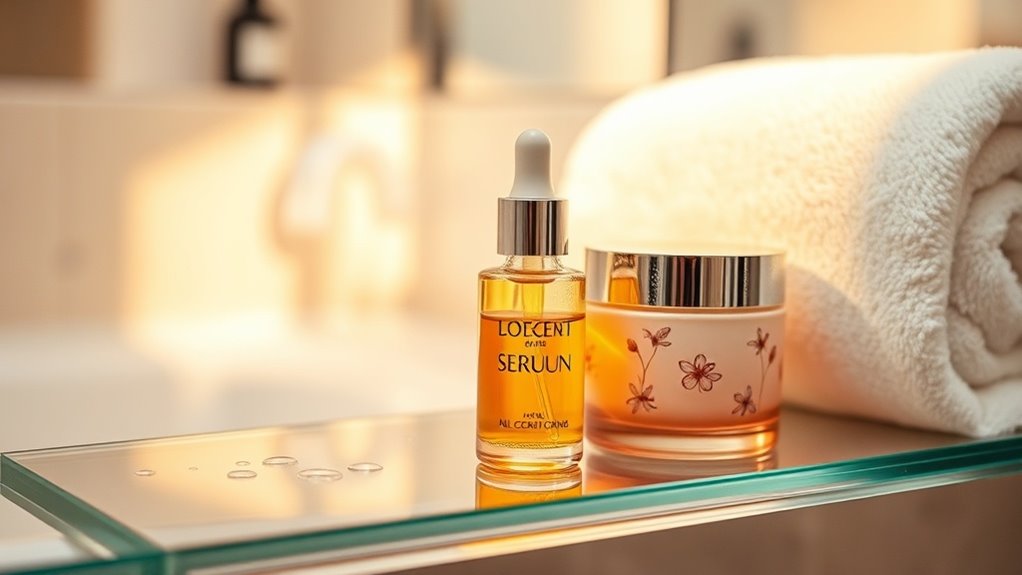Serums vs. Creams- Which One Does Your Skin Really Need.
Key Takeaways
- Serums deliver concentrated active ingredients for deeper skin penetration, ideal for targeted concerns like uneven tone or fine lines.
- Creams provide hydration and form a protective barrier, essential for maintaining moisture levels and enhancing skin resilience.
- Assess your skin type; oily skin may benefit more from lightweight serums, while dry skin often needs the soothing properties of creams.
- Layer serums on clean skin followed by creams to maximize product effectiveness and lock in hydration.
- Consider your specific skin needs and concerns to determine the right combination of serums and creams for optimal skincare results.
Understanding the Formulations of Serums and Creams
When it comes to skincare, understanding the formulations of serums and creams can significantly impact your choices. Serums typically contain a higher concentration of active ingredients, allowing for faster absorption and targeted effects. In contrast, creams usually offer hydration and a barrier, using oils and emollients. Additionally, many serums incorporate antioxidant-rich botanicals that help combat aging signs effectively.
Key Benefits of Using Serums
While creams offer essential hydration and protection, serums stand out for their targeted benefits and higher concentrations of active ingredients.
They penetrate deeply, delivering antioxidants, peptides, or hyaluronic acid directly where your skin needs it most.
This focused approach can lead to visible improvements in tone, texture, and overall skin health.
Incorporating serums into your routine can amplify your skincare results effectively. Additionally, serums often contain powerful skincare ingredients designed to address specific concerns, boosting their effectiveness even further.
Advantages of Creams for Skin Care
Creams play a vital role in skincare routines by providing moisture and forming a protective barrier on the skin’s surface. They’re especially beneficial for locking in hydration, which can reduce dryness and irritation. Creams often contain emollients and occlusives, enhancing skin’s smoothness and resilience. Additionally, their thicker consistency can improve absorption of active ingredients, making them ideal for maintaining healthy skin. Furthermore, the inclusion of hyaluronic acid in creams can significantly boost hydration levels, making them even more effective for achieving radiant skin.
Identifying Your Skin Type and Needs
How can you determine the right products for your skin?
Start by identifying your skin type: is it oily, dry, combination, or sensitive?
Observe how your skin reacts to environmental changes and products. Conduct a patch test before trying new items. Determining your skin type accurately is crucial as it helps tailor your skincare routine, ensuring you choose serums or creams that effectively address your unique skin needs.
How to Layer Serums and Creams Effectively
Understanding your skin type helps lay the groundwork for an effective routine, particularly when integrating serums and creams.
Start with the thinnest serum, applying it to clean skin for maximum absorption. Follow with a cream to lock in moisture and benefits. Incorporating multi-tasking products can further streamline your routine, allowing you to achieve desired results efficiently.
Making an Informed Choice for Your Skin Care Routine
When choosing the right products for your skin care routine, are you considering both your unique skin needs and the specific benefits of serums and creams?
Serums offer concentrated active ingredients that penetrate deeply, while creams provide essential hydration and barrier protection.
Assess your skin’s condition, and goals: prioritize serums for treatment or creams for moisture, tailoring your choices for optimal results. Additionally, understanding your skin type can further refine your product selection and ensure you are addressing your specific concerns effectively.





